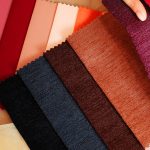Do you love being creative and productive? Sublimation can be a very interesting and riveting option for you. Well, if you don’t know much about sublimation, then you must keep reading to find out. Sublimation is a printing process in which a design is printed on a surface by using heat and pressure. The sublimation process allows you to mold your ideas into designs and images. Through sublimation, you don’t need a canvas anymore as you can print your ideas on anything, or any other sublimation materials.

Are you a beginner and don’t know what material can you sublimate on? Then you are at the right place. Here I have a perfect guide for you. The sublimation printing process is not a very complex. You can learn it easily in no time. You can opt for it as a hobby or can even start a business of your own. There are a few things that you definitely need to know if you want to jump into sublimation. You first need to get some equipment, learn how they work, select the design and material that you need to sublimate.
What Material Can You Sublimate On?
Table of Contents
Once you have got good-quality equipment and learned how to use these machines, then simply practicing would not help. If you want your art pieces or orders to be nicer then, you should focus on the material that you are sublimating on. The quality of the things that you sublimate, can have a great effect on the durability and finishing of your print.
If your sublimation material is appropriate for sublimation then you will have greater results. There is a list of things on which you can sublimate on but this does not identify that you can sublimate on anything. If your material is very smooth and gives a nice finish then, your prints will be more durable and will have a nice finish. Here I have a list of sublimation materials that you do need to try.
Fabrics
The most used sublimation material is fabric. You cannot sublimate any fabric especially if you are in business you need to focus on the quality of your product. Your print must have a smooth and neat finish. Man-made synthetic polyesters are the most suitable material for sublimation. You can also choose any other material which has a suitable amount of polyester blend in it. Polyester can help you make a high-quality and long-lasting print. Here I have a list of fabrics that you might love to sublimate.
Polyester
Polyester fabric is the ultimate material to sublimate on. The polyester fabric has the most suitable texture and fibers for the sublimation dye to bind to. You have to print your design using heat by converting the solid dye into the gaseous form so it could attach to your sublimation material. The quality of your print will be good if the dye binds nicely with the material.
In the case of polyesters, the material gets expanded when exposed to heat. The gaseous sublimation ink gets thoroughly absorbed into these open pores. When the fabric cools down, the gaseous ink is locked between these pores. Due to this property of polyesters, the dye is absorbed nicely and does not fade away easily. The polyester fabrics are wrinkle-free, durable, and resistant to tear and wear. All these properties of polyester make it the most suitable fabric for sublimation printing.
Cotton
Cotton is a natural fiber. It is very soft and comfortable to use. Which makes it a nice material for your products. But when you want to sublimation on cotton, it might disappoint you. Pure cotton does not provide you with the amount of binding you need for the durability of your print. All your efforts will be of no use as the print will fade away after a single wash. This is because the fibers of cotton cannot bind with the sublimation ink. So, instead of using pure cotton. one should get poly-blends of cotton and polyester.
Poly-blends
Pure 100% polyester fiber is resistant to wrinkle and tear and wear but it is not very comfortable. Most sublimation business involves making customized T-shirts. So, the material used must be comfortable because a shirt that has an elegant design but leaves you with irritation patches is not the one you will love to wear or buy again. If you want your customers happy then you should switch to a more comfortable option.
Poly-blends can be the safest option for your business and even for your at-home adventures. They have polyester fiber blended with other natural fibers such as cotton or linen. Poly-blends have both the properties of the two materials used. Poly-blends are more comfortable and less sensitive as compared to pure 100% polyester fabric as polyester can cause sensitivity reactions on the skin.
Not all types of poly blends are suitable for sublimation. There should be a specific ratio of polyester so the dye will completely attach to the fabric. If you use a poly-blend with a low proportion of polyester then your sublimation ink will not bind thoroughly with the fabric and your design will not be clear. There should be at least 40% of polyester in your poly blend for an appropriate result.
According to my experience, I suggest that you should use a poly-blend with 75% of polyester because your print will be clearer and will have a nice finish. Polycotton is one of the most recommended poly fibers for sublimation. Polycotton is comfortable, wrinkle-free, long-lasting, and affordable. It has the best features of both cotton and polyester which makes it the ultimate sublimation material for you.
Synthetic Fibers
Synthetic fibers are clothing materials that are manufactured by humans by chemical processes. These fibers are derived from chemicals, plants, or animals’ fur. There are many other synthetic fibers available out there other than polyester. Here are some of these synthetic fibers which can be used for sublimation.
Nylon
Nylon is a synthetic fiber that you can use to sublimate on. It is stretcher and softer than other fabrics. The most important thing you should keep in mind is that not every fiber can bear the heat. So, you should use low temperature while pressing for synthetic materials as they have a tendency to burn that will damage your material.
You can use low temperature while pressing on the nylon material. The most suitable temperature for nylon pressing is 275 degrees just for 5 seconds. They are more durable and have more water resistance. So, you must use a specialized dye while printing on nylon fabric as it cannot absorb water, so the fabric will not bind easily with the normal dye you use for polyester or cotton. To overcome this issue mostly nylons are treated with chemicals that help them with binding the sublimation ink.
Rayon
Rayon is a semi-synthetic, cellulose fiber that is much softer than polyester. It is heat-sensitive just like any other synthetic fiber. You need to be more careful while sublimating on this fabric. The print on rayon is not very durable and it might fade away after a few washes. So, you cannot use pure 100% rayon. You should either apply a polyester coating on it so the dye could bind easily with the material or you can also use a poly blend of nylon with polyester.
Other Synthetic Fibers
Here are some other synthetic fibers that you can use as your sublimation material but usually in a blended form. These synthetic fibers are man-made by using non-natural raw materials. These synthetic materials are resistant to temperature and bind with polyester or any other natural fiber such as cotton or linen which will improve their performance as sublimation material.
Here are some other synthetic fibers that you can use as your sublimation material but usually in a blended form. These synthetic fibers are man-made by using non-natural raw materials. These synthetic materials are resistant to temperature and bind with polyester or any other natural fiber such as cotton or linen which will improve their performance as sublimation material.
- Spandex is also known as Lycra or elastane. It is a synthetic fiber that is made up of polyurethane polymer. This synthetic fiber is known for its flexibility and elasticity. Just like any other synthetic fiber. It is also sensitive to heat and is used for sublimation when blended with any other form of fabric.
- Acrylic fiber is also known as orlon or artificial wool because of its resemblance to wool in texture. Acrylic fabric can also be used as a sublimation material. Due to its wool-like appearance and insulating abilities, it is usually used in warm-weather clothes. So, you can customize Hoodies or sweatshirts made up of it.
All these diverse types of fabrics whether natural or synthetic, whether derived from plants or animal sources all can be sublimated easily by you even at home. All you need is a good sublimation printer and a heat press. Out of all these fabrics that I have mentioned above, a poly-cotton blend with more than 45% polyester ratio will be the best sublimation fabric for you. One other thing to keep in mind is that the color of the fabric is also very important. The color of the material must be light so the background color doesn’t change or blend with your print design.
Some Other Sublimation Materials
Sublimation is not only limited to T-shirts or fabrics. There are thousands of blanks out there that are made up of many different materials. You can sublimate any design of your choice on these blanks. The only thing to remember is that not all materials can bind with the sublimation ink so there must be a polyester coating on these materials mentioned below. So, that your design is printed precisely on your sublimation materials. Here I have some other materials that you can use as sublimation material.
- Aluminum sheets can also be sublimated. If it is coated by a polyester coating which acts as a binding surface between the metallic sheet and the ink. You can make an aluminum photographic sheet at home using a printer and a heat press. All you have to do is take a picture, print it on a sublimation paper, and then heat press the paper on the sheet.
- PVC sheets are commercially used to make badges, visiting cards, and identity cards. Polyvinyl chloride is a plastic polymer and PVC sheets are quite light and long-lasting. First, a design is generated by using a computer program. Then it is transferred to a sublimation paper. Then pressed onto the PVC sheets which are later cut down into card size.
- Glass is also a very broadly used sublimation material. Different glass cups or frames are used as sublimation materials. You can customize your set of glasses at home. You can make customized glass frames just like glass painting.
- Mugs are also one of the most demanding sublimation materials. There are special mug presses that are specially designed to transfer the design from the sublimation paper to the mug. You can customize mugs for you and your loved ones which will be fun.
- Wood is also a good sublimation material and is coated with polyester. You can make frames, ornaments, and cup covers by sublimating on wood. Plywood and birch are mostly used wood for sublimation design. Their smooth surface and light color make them suitable for sublimation.
FAQ’s
Conclusion
After this discussion you will get what material can you sublimate on? There is a very broad range of sublimation materials out there. Here I have tried to mention them all. All these materials have their pros and cons that have been thoroughly explained. All the sublimation materials listed above can surely help you choose your favorite one. You don’t have to go through each and every material in order to know the best.
By experiencing each of these products I have concluded that all these materials are fun to work with but if you are running your business then you should focus more on T-shirts and mugs as they are more in demand. The best material for t-shirts is a poly-cotton fabric as it is comfortable and durable.





